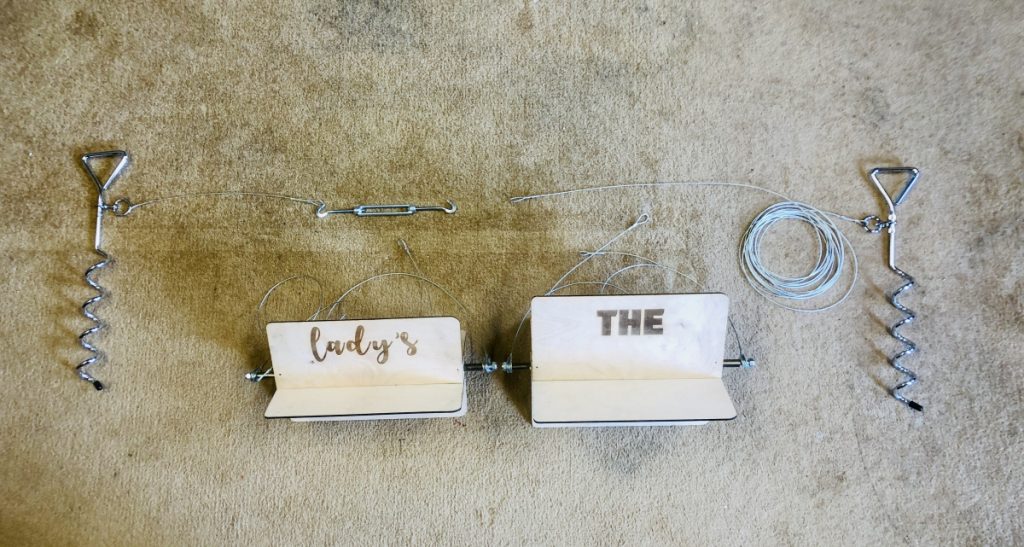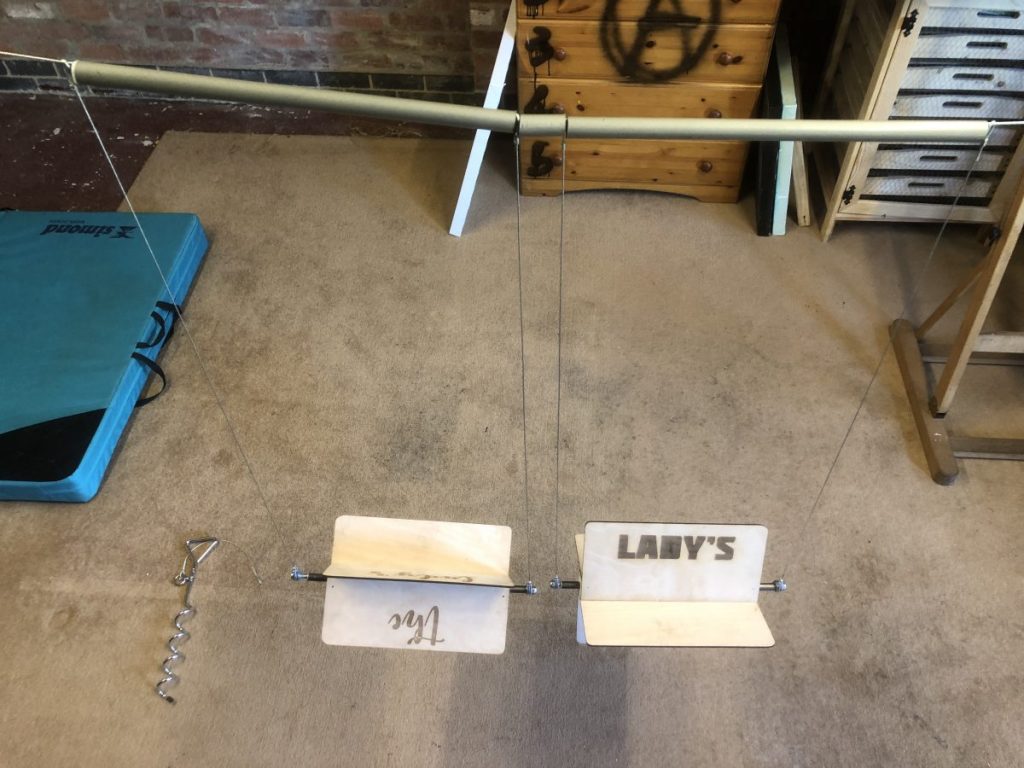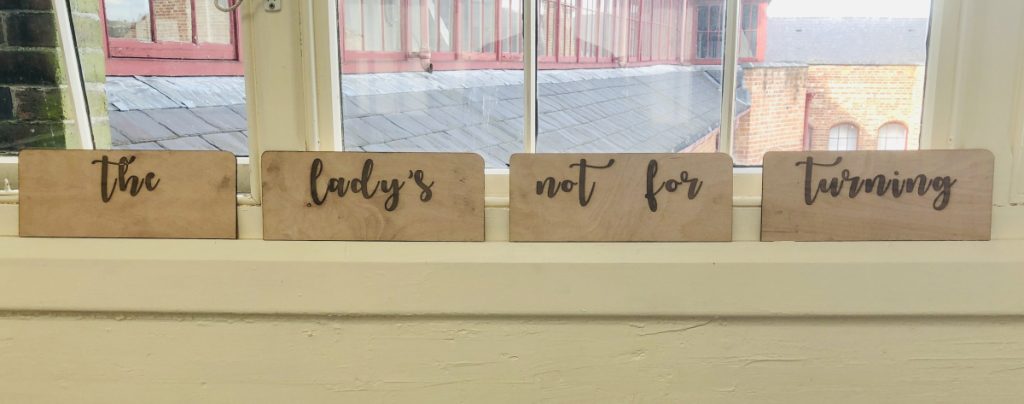This next experiment involved 2 paddles to assess how well they turned together but also each water wheel had paddles with different heights (12cm and 15m) to assess their aesthetic appeal and turning ability. In addition, two different font styles were used, a handwriting and block font, to assess their readability but more importantly the symbolism that the font carried. A sample phrase was chosen that was uttered by the Iron Lady in 1980 which seemed to contrast quite satirically with the sinuous nature of the river.
The construction of the paddles is shown below, involving the wire and materials obtained online. We have a single long wire that stretches across the bank and is secured using spiral stakes and a tensioner. The paddles themselves are suspended with 40cm vertical wires and a hollow bar is placed on the long wire to space out the paddle wires evenly. Each paddle has a threaded bar through its middle that protruded by 5cm on each side. A small piece of hollow pipe, a washer, then a locking nut secure everything together. A thimble is used on each end of the paddle to attach the vertical wires. Ferrules are used to create secure loops on the wire. The arrangement seemed to rotate well and was aesthetically pleasing so a trip to the river took place.
The paddles are in action below and they work well. The vertical wire was purposely not completely taut so the paddles rested on the water surface rather than being suspended – note how the vertical wires are pushed downstream slightly. This seemed to slow the turning down as the rear paddle slaps on the surface and stops the turning before the force of the water turns the wheel again. I like how the turning is not fluid but seems to stop for long enough for us to read the text. This seems to break the resemblance to a waterwheel as we are seeing a device that is performing intermittently, it’s as if something is resisting the turning that we can’t quite understand. It’s interesting that in this slow-moving water the paddles appear to be powered, as the flow is so subtle. We feel a slight tension when waiting for the next turn, more so than if the wheels were turning constantly. I feel that this adds more engagement to the piece as the expectation is increased.
I now try to imagine a row of 5 paddles and what font and text will lift this mechanical device to a successful artistic outcome. From a practical perspective, neither of these fonts are readable enough but more importantly the handwriting font looks contrived (it’s mimicking the real thing) so I’m leaning more towards a clear block font that has an industrial aesthetic. The heritage of the valley will be better represented by this type of font and the words I choose may well have an industrial/progress reference so the match will be more appropriate.
The next consideration is whether to use a cut-out stencil or engrave the text. The cut out text has a lovely burnt edged appearance which adds potency to the words, as if they carry fire with them, they have punctured holes when they were spoken. My concern is readability as many stencil fonts are tight and complex so a search for more stencil fonts will be worthwhile.
Both sizes of paddle seem to perform the same so the size is an aesthetic consideration. The larger paddles move faster (as the diameter is larger) so that movement seems slightly more dramatic and also they would allow a larger font to be used and give more space around the text. So I’m favouring the larger (15cm) paddles at the moment.
Even in this short clip, the paddles are getting out of sync, which was my intention. I find my eyes flitting between the two and I enjoy the random phrases that are created. With 5 waterwheels the ‘work’ for the audience would be a constant horizontal eye exercise but they will need a reward. I want them to make their own new phrases but I want them to work a bit harder to see the original in tact phrase. I’m confident that 5 waterwheels will give viewers enough of a satisfying experience for a good deal of time.
Summary & next steps
A number of lessons were learnt from this experiment that I need to resolve for the final version:
- The single vertical wire was too short – it needs to be 7m long to ensure it can stretch across to the banks reliably
- End stops on the wires – I need these to stop piercing my skin as the cut wires are sharp
- Extra wire for initial throw – I need an extra wire to initially throw across the river which can then be used to pull the paddles into place
- Lengths of metal tube – these worked well to space the vertical wires but I need to consider if a single length of tube will be required to keep 5 water wheels in place as weight may become an issue
- Weight of 5 paddles – 2 people will be required to fix the vertical wire to ensure it is taught enough
This experiment was successful from a technical perspective but I have a slight concern that the project has been a little too focused on mechanics rather than artistic meaning. I will pause the build of paddles while I look in more detail at land artists and finalise the text and font to use on the paddles.


